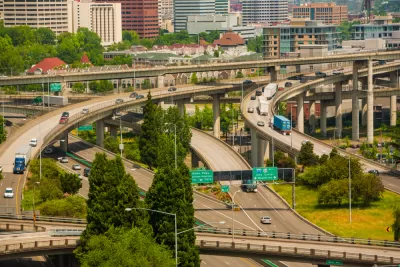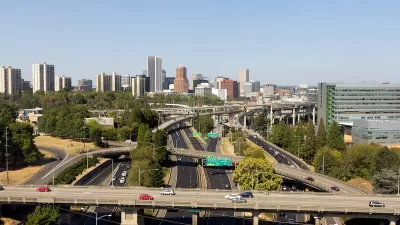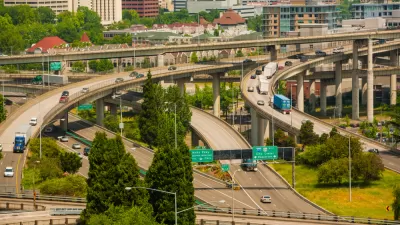An executive order ramps up the effort to lower emissions in the state, much of which come from transportation.

Earlier this month, Governor Kate Brown of Oregon signed Executive Order 20-04, directing state agencies and commissions to take steps to reduce and regulate greenhouse gas emissions. The order also mandates that state agencies work to reduce emissions to 45 percent below 1990 levels by 2035 and to 80 percent below 1990 levels by 2050.
About 40 percent of greenhouse gas emissions in Oregon are related to transportation, writes Jonathan Maus. "[This] action by Governor Brown says [the Oregon Department of Transportation] and [the Oregon Transportation Commission] have a legal requirement to reduce those emissions."
ODOT and OTC must also make implementation of the Oregon Statewide Transportation Strategy a priority. "Furthermore, the order directs ODOT to set metrics and then evaluate GHG impacts of all transportation projects in regional transportation plans," says Maus.
FULL STORY: Governor Brown’s executive order on climate change could have impacts on transportation

Alabama: Trump Terminates Settlements for Black Communities Harmed By Raw Sewage
Trump deemed the landmark civil rights agreement “illegal DEI and environmental justice policy.”

Planetizen Federal Action Tracker
A weekly monitor of how Trump’s orders and actions are impacting planners and planning in America.

The 120 Year Old Tiny Home Villages That Sheltered San Francisco’s Earthquake Refugees
More than a century ago, San Francisco mobilized to house thousands of residents displaced by the 1906 earthquake. Could their strategy offer a model for the present?

In Both Crashes and Crime, Public Transportation is Far Safer than Driving
Contrary to popular assumptions, public transportation has far lower crash and crime rates than automobile travel. For safer communities, improve and encourage transit travel.

Report: Zoning Reforms Should Complement Nashville’s Ambitious Transit Plan
Without reform, restrictive zoning codes will limit the impact of the city’s planned transit expansion and could exclude some of the residents who depend on transit the most.

Judge Orders Release of Frozen IRA, IIJA Funding
The decision is a victory for environmental groups who charged that freezing funds for critical infrastructure and disaster response programs caused “real and irreparable harm” to communities.
Urban Design for Planners 1: Software Tools
This six-course series explores essential urban design concepts using open source software and equips planners with the tools they need to participate fully in the urban design process.
Planning for Universal Design
Learn the tools for implementing Universal Design in planning regulations.
Clanton & Associates, Inc.
Jessamine County Fiscal Court
Institute for Housing and Urban Development Studies (IHS)
City of Grandview
Harvard GSD Executive Education
Toledo-Lucas County Plan Commissions
Salt Lake City
NYU Wagner Graduate School of Public Service




























